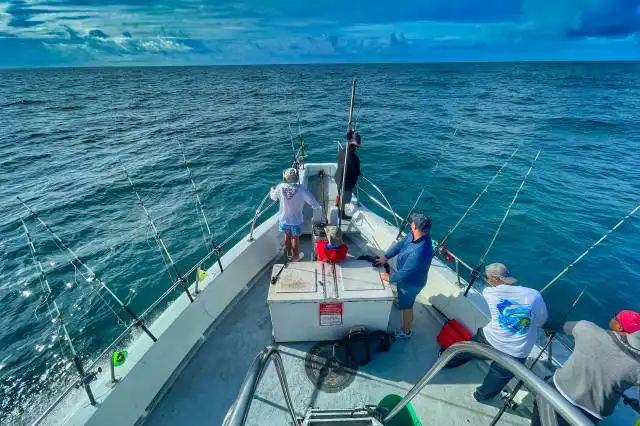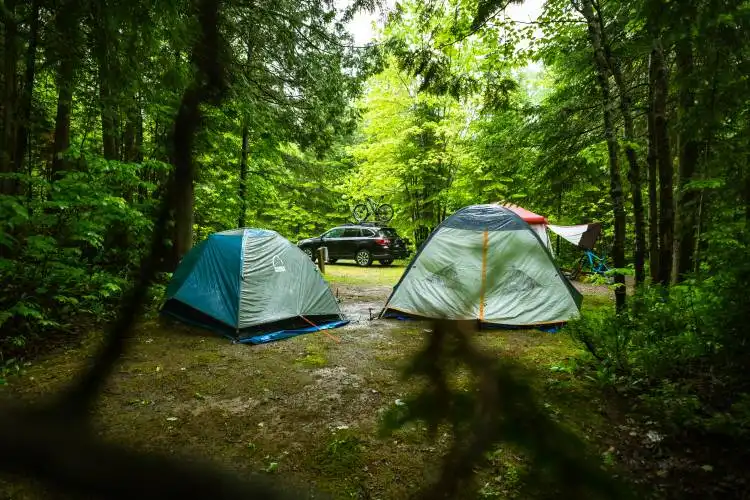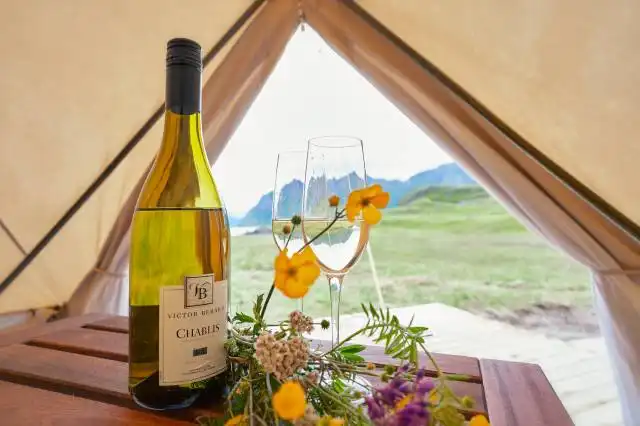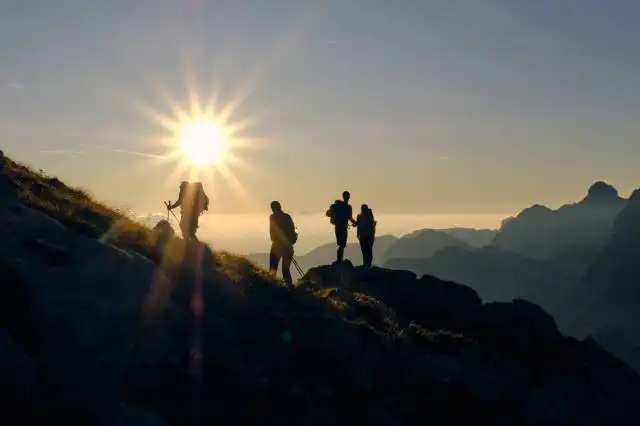Start a Camping Retreat Business
Embrace the Wilderness and Prosper: The Art of Running a Camping Retreat Business
| Updated


CAMPING RETREAT BUSINESS
Venturing into a camping retreat business would tickle both your adventurous spirit and your entrepreneurial itch. If you're yearning for the wild and at the same time eager to fatten the wallet, then this is the business for you. A camping retreat business offers an outdoor living experience, typically in tranquil, scenic environments, while providing essential services like lodging, gear rental, and guided activities. It’s like gifting your clients the chance to exchange their daily routine for the freedom of wooded areas and starlit skies — all while ensuring your bank account gets a taste of the green life, too!
Jump to Business Plan
RELATED BUSINESS IDEAS
Browse ALL Hospitality & Leisure Ventures Business Ideas
Discover Your Perfect Domain
Unlock the door to your online success with our hand-picked selection of premium domain names. Whether you're starting a new venture or rebranding an existing one, the right domain can set the tone for your digital presence. Browse through our curated list, each with its unique potential to enhance your brand's visibility and credibility.
CAMPING RETREAT MINI BUSINESS PLAN
This a quick reality check to help you identify the strengths and weaknesses of your business concept before you dive in.
Expected Percent Margin:
- Gross Margin: 50-70%
- Net Profit Margin: 20-30%
Earnings Expectations:
- Daily Earnings: $300 - $600
- Weekly Earnings: $2,100 - $4,200
- Monthly Earnings: $9,000 - $18,000
- Annual Earnings: $108,000 - $216,000
Actions to Hit Those Numbers:
Licensing and Insurance:
- Invest in necessary permits and licenses: Always stay relevant with laws and regulations to avoid penalties.
- Insurance: Ensure you have coverage for potential liabilities.
Location Management:
- Initial Investment: Depending on the location, you may need between $50,000 - $100,000 to secure a suitable area.
- Property Maintenance: Establish a systematic routine to clean and maintain the camping area.
Marketing and Customer Acquisition:
- Online Presence: Build a user-friendly website with online booking system. Set aside at least $200-$300 per month for website maintenance and marketing.
- Social Media: Frequently post on platforms like Instagram and Facebook to attract camping enthusiasts.
Services and Customer Experience:
- Unique Offerings: Provide unique experiences like guided hikes, outdoor workshops, etc.
- Staffing: Employ adequately trained staff to ensure outstanding customer service.
Cost Control:
- Managing Operational Costs: Choose energy-efficient resources wherever possible. Regularly maintain equipment to avoid large expenses in the future.
Business Operations:
- Booking System: Aim to achieve 70-80% occupancy rate during peak season.
- Seasonal Adjustments: Offer discounts or additional services during off-season to maintain revenue flow.
As usual, these are broad estimations and can vary greatly based on factors such as campsite location, size, amenities, and more. Consulting with a financial advisor before making business decisions is always beneficial.
NOT WHAT YOU HAD IN MIND? Here are more ideas



Browse ALL Hospitality & Leisure Ventures Business Ideas
Grab Your Business Website Name
Before you get caught up in the whirlwind of setting up your business, invest in a domain name. It's a small but significant step that lays the foundation for your brand and makes it easier for customers to find and trust you. Just like you wouldn't build a house without securing the land first, don't build a business without securing your domain name.
"Why? Can't that wait?" Here's why it shouldn't
Step 1: Determine if Starting a Camping Retreat Business is Right for You
Breakdown of Startup Expenses
Before starting a camping retreat business, it is important to have a good understanding of the startup costs. This includes the cost of the land, any necessary permits, the cost of building or renting cabins, and the cost of any necessary equipment. Additionally, you will need to factor in the cost of marketing and advertising, as well as the cost of hiring employees. It is important to have a good understanding of these costs before getting started.
Breakdown of Ongoing Expenses
Once the business is up and running, there are a number of ongoing expenses to consider. This includes the cost of utilities, such as electricity, water, and sewer. Additionally, you will need to factor in the cost of maintenance and repairs, as well as the cost of supplies and food. It is important to have a good understanding of these costs before getting started.
Examples of Ways to Make Money
There are a number of ways to make money with a camping retreat business. This includes renting out cabins, offering camping packages, and offering activities such as fishing, hiking, and kayaking. Additionally, you can offer catering services, sell merchandise, and offer classes or workshops. It is important to have a good understanding of these potential revenue streams before getting started.
Step 2: Name the Business
Brainstorm a list of potential names When brainstorming potential names for a camping retreat business, it is important to consider the type of retreats offered, the target audience, and the location. Consider the type of activities offered, the type of lodging, and the type of amenities offered. Additionally, consider the type of environment the retreat will provide, such as a relaxing atmosphere or an adventurous one. After brainstorming a list of potential names, narrow it down to a few favorites.
Research the names Once a few names have been chosen, research each one to make sure it is not already in use. Check the USPTO website to see if the name has already been trademarked. Additionally, search the internet to see if the name is already in use. If the name is already in use, it is important to choose a different one.
Choose a name After researching the potential names, choose the one that best fits the business. Consider the message the name conveys and how it will be perceived by the target audience. Additionally, consider how the name will look on business cards, websites, and other marketing materials.
Register the business name Once the name has been chosen, register the business name with the state. This will ensure that no one else can use the same name and will also protect the business from potential legal issues. Additionally, registering the business name will make it easier to open a business bank account and apply for business licenses.
Step 3: Create a Business Plan
- Executive Summary: The executive summary should provide a brief overview of the business, including the business’s purpose, the services it will offer, the target market, and the expected financial performance. It should also include a brief description of the business’s competitive advantages.
- Market Analysis: This section should include an analysis of the camping retreat industry, including the size of the market, the target market, and the competitive landscape. It should also include an analysis of the customer’s needs and how the business will meet those needs.
- Business Description: This section should provide a detailed description of the business, including the services it will offer, the location, the management team, and the ownership structure.
- Financial Plan: This section should include a detailed breakdown of the startup costs, ongoing expenses, and projected income. It should also include a financial projection for the first three years of operation.
Executive Summary: The executive summary should provide a brief overview of the business, including the business’s purpose, the services it will offer, the target market, and the expected financial performance. It should also include a brief description of the business’s competitive advantages. For the camping retreat business, the executive summary should include the type of services offered, such as camping, hiking, and other outdoor activities, the target market, such as families and groups, and the expected financial performance, such as the expected revenue and profits. Additionally, the executive summary should include a description of the competitive advantages that the business has, such as a unique location or a specialized staff.
Market Analysis: This section should include an analysis of the camping retreat industry, including the size of the market, the target market, and the competitive landscape. It should also include an analysis of the customer’s needs and how the business will meet those needs. The market analysis should include an overview of the camping retreat industry, such as the size of the market, the target market, and the competitive landscape. Additionally, the market analysis should include an analysis of the customer’s needs and how the business will meet those needs. This should include an analysis of the customer’s needs, such as the type of activities they are looking for, the type of amenities they are looking for, and the type of pricing they are looking for. It should also include an analysis of how the business will meet those needs, such as offering a variety of activities, providing high-quality amenities, and offering competitive pricing.
Business Description: This section should provide a detailed description of the business, including the services it will offer, the location, the management team, and the ownership structure. The business description should include a detailed description of the services that the business will offer, such as camping, hiking, and other outdoor activities. It should also include a description of the location of the business, such as the type of terrain, the proximity to other attractions, and the accessibility. Additionally, the business description should include a description of the management team, such as the qualifications and experience of the team members, and the ownership structure, such as the type of ownership, the number of owners, and the percentage of ownership.
Financial Plan: This section should include a detailed breakdown of the startup costs, ongoing expenses, and projected income. It should also include a financial projection for the first three years of operation. The financial plan should include a detailed breakdown of the startup costs, such as the cost of equipment, the cost of supplies, and the cost of marketing. It should also include a breakdown of the ongoing expenses, such as the cost of labor, the cost of utilities, and the cost of insurance. Additionally, the financial plan should include a projection of the expected income, such as the expected revenue and profits, and a financial projection for the first three years of operation.
Step 4: Secure Financing
Traditional Bank Loan When starting a business, a traditional bank loan is often the first option to consider. Banks offer loans with competitive interest rates and repayment terms. Before applying for a loan, it is important to have a well-crafted business plan that outlines the business’s goals, strategies, and financial projections. Additionally, it is important to have a good credit score and a solid history of financial responsibility.
Small Business Administration (SBA) Loan The Small Business Administration (SBA) offers loans to small businesses that may not qualify for traditional bank loans. These loans are often more accessible and have more flexible terms than traditional bank loans. Additionally, the SBA provides resources and guidance to small businesses, which can be helpful for those who are new to the business world.
Crowdfunding Crowdfunding is a great way to raise money for a business. Through crowdfunding, entrepreneurs can reach a large audience and potentially raise a substantial amount of money. There are many crowdfunding platforms available, such as Kickstarter and GoFundMe, and entrepreneurs should research the different platforms to determine which one is best for their business.
Angel Investors Angel investors are individuals who provide capital to businesses in exchange for equity. These investors often have experience in the industry and can provide valuable advice and guidance to the business. Additionally, they can help the business to grow and expand.
Friends and Family Friends and family can be a great source of financing for a business. They may be willing to provide capital with no expectation of repayment or with a repayment plan that is more flexible than a traditional loan. However, it is important to remember that borrowing money from friends and family can put a strain on relationships, so it is important to approach the situation with caution.
Step 5: Obtain Licenses and Permits
Before you can start a camping retreat business, you must obtain the necessary licenses and permits. Depending on the location of your business, the types of licenses and permits you will need will vary. Generally, you will need a business license, a sales tax permit, and a zoning permit. Additionally, you may need to obtain a food service license if you plan to provide meals to your guests.
How to Obtain Licenses and Permits
The process of obtaining the necessary licenses and permits can be complicated and time consuming. Start by researching the requirements in your area and contact your local government offices to learn more. You may need to fill out forms, provide documentation, and pay fees. Additionally, you may need to pass an inspection to ensure your business meets all local regulations.
Cost of Licenses and Permits
The cost of licenses and permits will vary depending on the type of business and the location. Generally, you can expect to pay anywhere from a few hundred to a few thousand dollars for the necessary licenses and permits. Additionally, you may need to pay annual fees to keep your licenses and permits up to date.
Importance of Licenses and Permits
It is important to obtain the necessary licenses and permits before you start your business. Without them, you may face fines, penalties, and even the closure of your business. Additionally, some customers may be hesitant to work with a business that does not have the necessary licenses and permits. Therefore, it is important to ensure that you have all the necessary licenses and permits before you start your business.
Step 6: Choose a Location
- The type of camping retreat business you plan to run: Depending on the type of camping retreat business you plan to run, you may need to consider different factors when choosing a location. For example, if you plan to run a luxury camping retreat, you may want to choose a location that is close to a body of water or other natural attractions. If you plan to run a more rustic camping retreat, you may want to choose a location that is more remote and secluded.
- Accessibility: When choosing a location, you should also consider how accessible it is to potential customers. If your retreat is located in a remote area, you may need to provide transportation for customers to get to your retreat.
- Local regulations: You should also research local regulations to make sure that your retreat is in compliance with all relevant laws and regulations.
- Cost: Cost is also an important factor to consider when choosing a location. You should research the cost of renting or buying land in the area and factor that into your budget.
Securing a Location
- Research: Once you have identified a potential location, you should research the area to make sure that it is suitable for your needs.
- Negotiate: Once you have identified a suitable location, you should negotiate with the owner or landlord to secure the property.
- Contract: Once you have negotiated a deal, you should have a contract drawn up that outlines the terms of the agreement.
- Inspect: You should also have the property inspected to make sure that it is safe and suitable for your needs.
Step 7: Market the Business
Once the business is up and running, it is important to market the business to potential customers. There are a variety of ways to market a camping retreat business. Social media is an effective and low-cost way to reach potential customers. Creating a website and using search engine optimization (SEO) techniques can help potential customers find the business. Additionally, creating an email list and sending out newsletters can help keep customers informed of upcoming events and promotions.
Networking
Networking is also an important part of marketing a camping retreat business. Attending local events and joining local business organizations can help spread the word about the business. Additionally, forming partnerships with other businesses in the area can help bring in more customers. For example, partnering with a local outdoor equipment store can help bring in customers who are looking for camping supplies.
Advertising
Advertising is another way to market a camping retreat business. Advertising in local newspapers and magazines can help reach potential customers. Additionally, radio and television advertising can help spread the word about the business. Finally, using online advertising, such as Google Ads, can help target potential customers who are searching for camping retreats.
Step 8: Purchase Equipment and Supplies
When starting a camping retreat business, it is important to purchase the necessary equipment and supplies. This includes items such as tents, sleeping bags, camping chairs, and other camping gear. Additionally, you will need to purchase items such as firewood, cooking supplies, and other items that will be necessary for the camping retreat. It is important to research the best quality items that will last for a long time and provide the best value for your money.
Where to Purchase
When purchasing equipment and supplies for your camping retreat business, you have a few options. You can purchase items from local stores, online retailers, or even directly from the manufacturer. It is important to compare prices and quality when making your purchases. Additionally, you may be able to find discounts or special offers if you purchase in bulk.
Cost Considerations
When purchasing equipment and supplies for your camping retreat business, it is important to consider the cost. You should create a budget for the items you need and try to stick to it. Additionally, you should factor in the cost of shipping and taxes when making your purchases. This will help you to stay within your budget and ensure that you are getting the best value for your money.
Insurance
When purchasing equipment and supplies for your camping retreat business, it is important to consider insurance. You should purchase insurance that will cover any damage or loss of the items you purchase. This will help to protect your investment and ensure that you are not out of pocket if something were to happen to your equipment or supplies.
Step 9: Hire Employees
- Research the local labor market to determine the availability of potential employees.
- Consider the type of employees you need to hire, such as camp counselors, cooks, and maintenance staff.
- Create job descriptions that clearly outline the duties and responsibilities of each position.
- Develop a recruitment plan that includes advertising the positions and interviewing candidates.
- Have a thorough onboarding process that includes training and orientation.
- Establish a system for evaluating employee performance and providing feedback.
Benefits of Hiring Employees
- Hiring employees can help to reduce the workload of the business owner.
- Having employees can help to increase the efficiency of the business.
- Employees can provide valuable insights and ideas for improving the business.
- Having employees can help to create a more professional image for the business.
- Employees can help to build relationships with customers and other stakeholders.
- Having employees can help to expand the reach of the business.
EXPLORE MORE CATEGORIES
Browse ALL Business Idea Categories
TAKE THE NEXT STEPS










